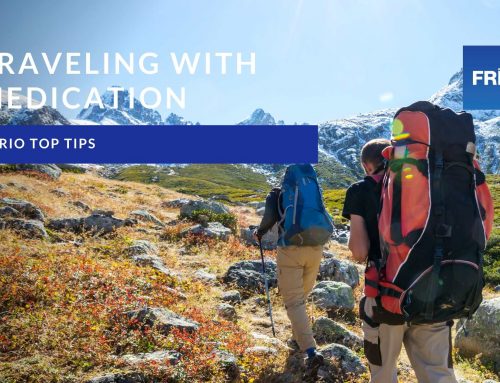Life with type 1 diabetes takes on many forms of daily responsibilities which can understandably bring occasional stress and concerns. It takes thought and consideration to navigate your day – and every day is different – from particular activities to what you’ll be having for breakfast, lunch, dinner or even snacking in between.
Put it this way: living with type 1 diabetes makes you a living calculator!
It can easily lead to a bit of dia-burn-out and yes, we are entitled to have a moan now and then. Finding that willingness to work with your diabetes each day though is the key to achieving your best results, long term. It is not always going to go to plan, but that’s where you can learn the most valuable lessons. One area I’m often questioned on, aside from sports, is travel. So, here is my guide to travelling with type 1 diabetes.
Managing T1D while travelling
Understandably, there can be some big question marks about how glucose management might vary on your travels. Changes in diet, temperature, time zones… it goes on, and as we know with type 1 diabetes, everything needs to be weighed up and considered.
Last year I had a hectic but incredible schedule which saw me travel to 9 countries across 6 continents in the space of 75 days. Event after event took me around the world in 75 days – and living with T1D – in your face Mr Fogg!
This year I’ll be at it again with visits to Southampton to host a student HCP (healthcare professional) training module session, Norway for another HCP training event and Costa Rica to host a youth diabetes camp. (Click here to see full details of my upcoming events).
For me it’s about having a plan. Similar to when I’m out there running my crazy marathons, it’s always important to have a plan. It may not always be 100% successful but you can make the necessary tweaks as you go. Last year when I travelled to San Francisco, the time difference of eight hours meant I had to really consider (on multiple daily injections) the time plan of my basal insulin. On one hand there was the option to simply take my basal at the same times as injections (for me a twice daily split) but at different hours of the day instead of morning and evening, or I could make the adjustments on the plane (with some close blood sugar checks and additional bolus support on hand) so that my morning and evening doses of basal insulin regimes continued in the new time zone.
I opted for the latter, more complicated initially but more effective for my days whilst over there. Another big time change was in Fiji…I literally couldn’t be further from home! But it worked out well because an 11 hour adjustment in time meant my ‘evening’ dose of basal insulin became my morning dose and vise versa.
Keeping an eye on your carbs
Sometimes there’s a challenge in carb-counting especially, as I’ve found with the different but wonderful dishes around the world, when you aren’t familiar with what exactly is in front of you! A big joy for me in travelling is embracing the local culture and food is a massive part of that. So my decision is to always do that and not let diabetes get in the way.
However, it’s not always easy. For example, in Eastern Europe you can come across some very unfamiliar dishes which is always amazing, but carb-counting then becomes “carb-guessing”! In many countries rice dishes are big on the menu and they are often high in carbs. My attitude is to go with it and with something like the unfamiliar sauces, perhaps look to an extra unit or two of bolus insulin. But remember, when walking about in the warmer more humid climates, less insulin is often required, particularly basal.
Keeping your insulin safe with a FRIO
Keeping insulin at the right temperature is a big deal. A problem I’d experienced previously in Australia years ago on one of my first independent “diabetes” travels, was that some of my insulins weren’t kept in a fridge and so they overheated and became useless. It became an insulin roulette as to what pens were still good.
Using FRIO cooling wallets is an essential planning element for me today. Having something I can go out and about with that’s okay to carry whilst keeping my insulin cool, FRIOs are ideal! In places like Hong Kong, Fiji, Ghana and Costa Rica last year where the temperatures were soaring, it was essential when doing my outdoor events to keep my insulin cooled in my FRIO.
As part of my partnership with FRIO, I have been able to team up with T1 International during a trip to Uganda where I ran some advocacy and empowerment sessions for children and adolescents living with diabetes through the Sonia Nabeta Foundation’s “Camp Waromo.” Thanks to FRIO I was able to supply the kids of the camp with a selection of FRIO cooling wallets to use in their daily lives which was a great feeling. It’s one thing travelling to warmer climates, but it’s another thing to live there as a type 1 diabetic with a lack of resources to keep insulin safe. It was a simple gesture but it mattered a lot and I’m pleased we got to go over there and do it.
Click here to order your FRIO cooling wallet today and keep your insulin safe while you enjoy your travels.







